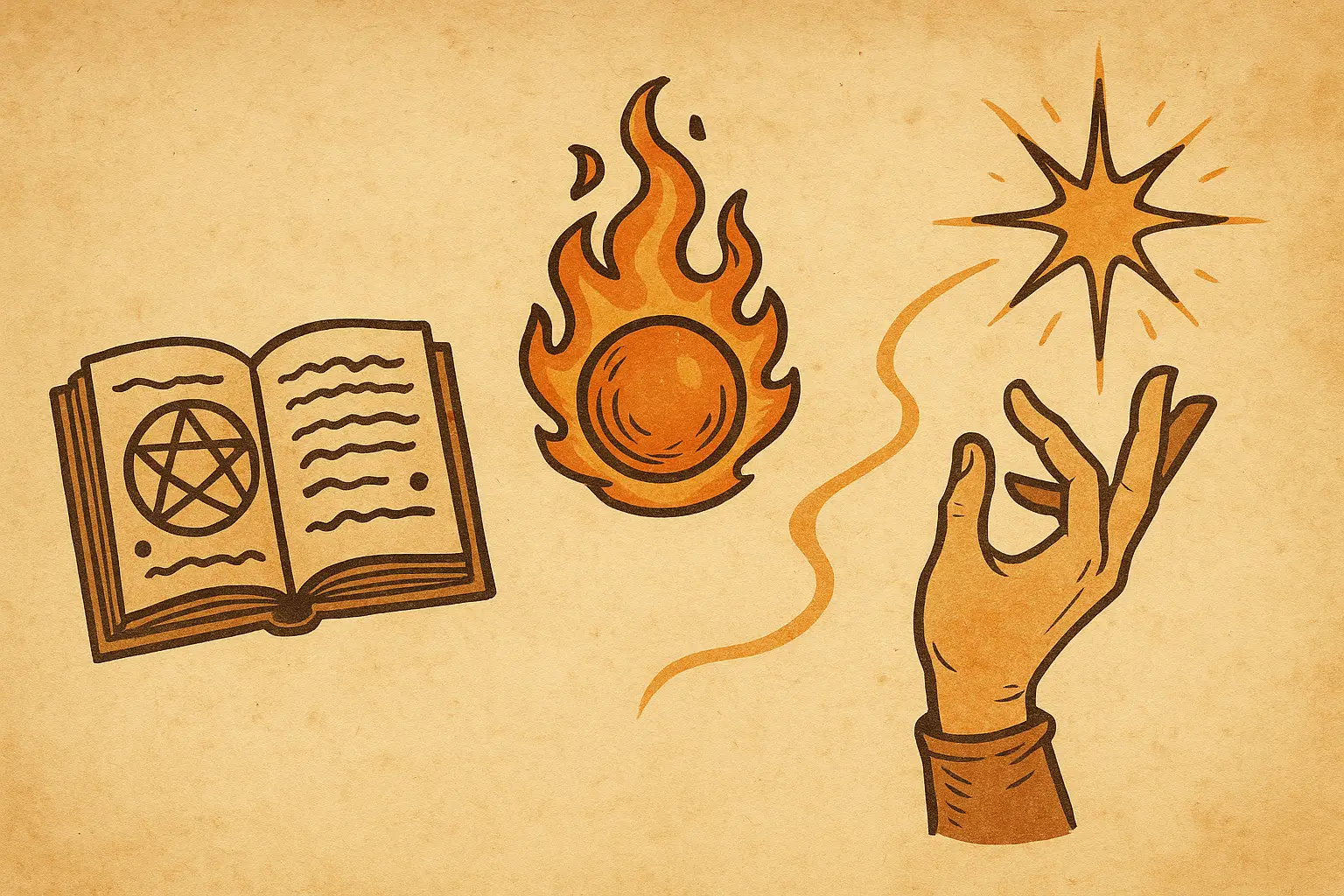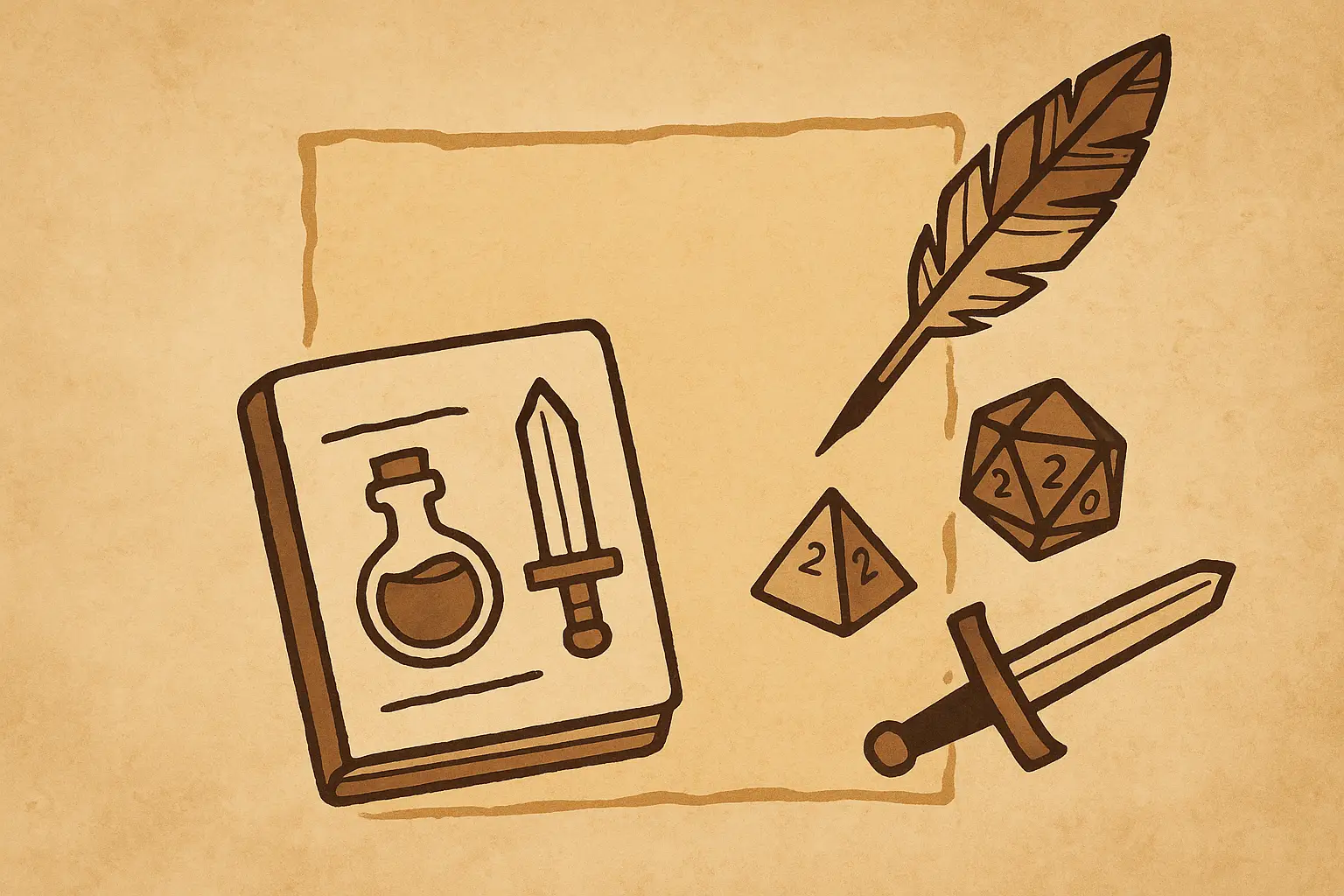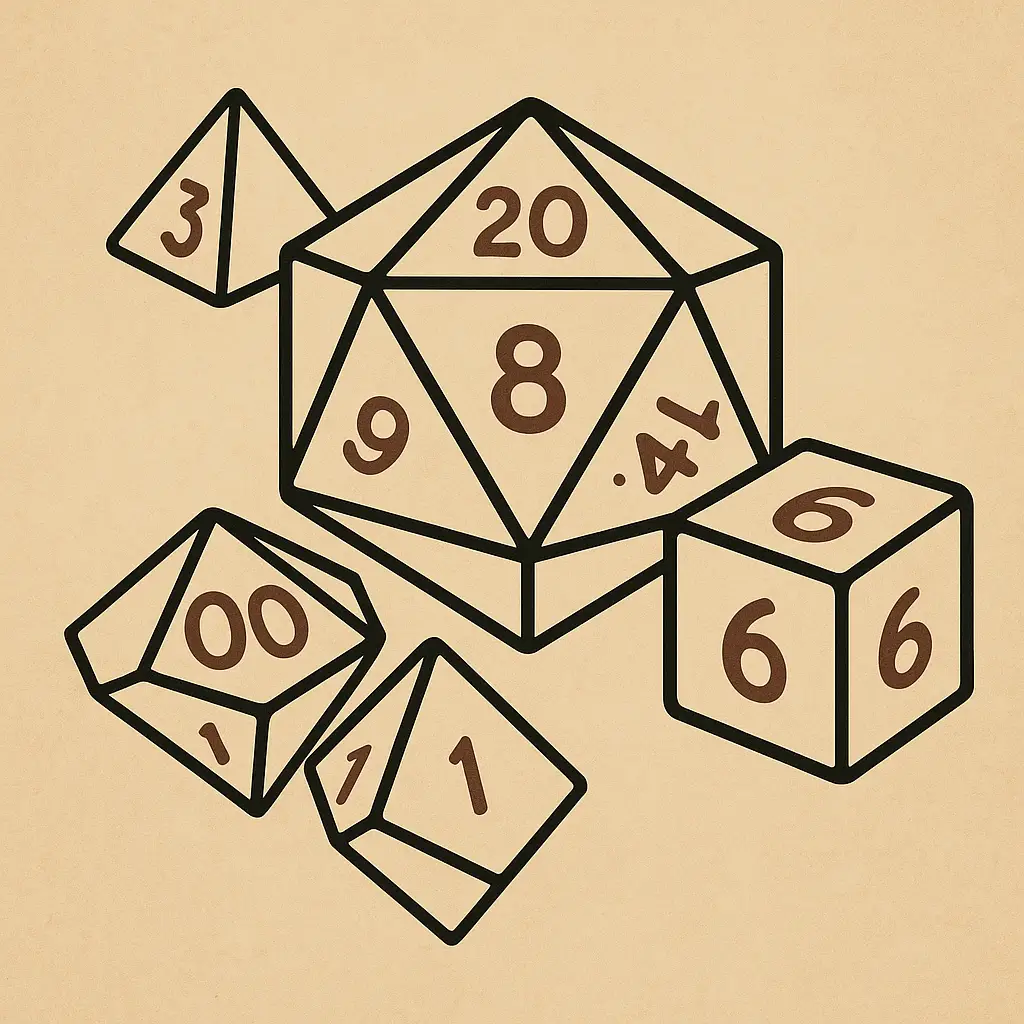Creating the game your table actually wants to play
Homebrewing is the great frontier of tabletop RPGs.
It’s the moment a GM says, “What if falling damage didn’t suck?”
Or a player asks, “Can I play a talking sword that also brews coffee?”
Or someone at the table—casually, inevitably—adds a rule about cheese-based sorcery and suddenly it’s canon.
Custom rules are part of what makes tabletop RPGs so powerful. Unlike video games or board games, TTRPGs are inherently flexible, ready to be retooled, hacked, or completely rebuilt to fit the vibe of your table.
But with great power comes… well, occasional chaos.
Today on RPGInquisitor, we’re diving into the why, how, and when of homebrewing rules—so you can make your game better, not broken.
Let’s roll initiative.
🧠 Why Homebrew?
Homebrew rules exist for one reason: the default didn’t quite do what you wanted.
Common motivations include:
- Fixing perceived balance issues
- Enhancing realism or consistency
- Encouraging specific types of gameplay (more roleplay, more risk, etc.)
- Supporting narrative tone or theme
- Adding comedy, drama, or weirdness that the base system doesn’t cover
Example: You want underwater combat to feel different, so you homebrew visibility rules, harpoon mechanics, and oxygen checks.
Homebrew isn’t just about personal taste—it’s about making the system match the story you’re trying to tell.
🧰 Types of Homebrew Rules
🔧 1. Mechanical Tweaks
Adjustments to existing mechanics.
- Example: Crits only double weapon dice, not bonus damage.
- Example: Resting heals based on CON instead of fixed dice.
Risk Level: Low
Best For: Smoothing friction or tweaking power curves.
🧱 2. New Subsystems
Entire mechanics layered on top of the existing game.
- Example: Downtime job system
- Example: Sanity or stress tracker
- Example: Social intrigue minigame
Risk Level: Medium to High
Best For: Adding flavor, realism, or narrative options between main scenes.
🎭 3. Roleplay or Setting Rules
Fluff-first mechanics that support setting or tone.
- Example: All spells have visual effects regardless of outcome.
- Example: Nobles must duel via poetry.
Risk Level: Very low (but easy to forget)
Best For: World cohesion and theme reinforcement.
🧪 4. Experimental Systems
Homebrew classes, races, or spellcasting systems.
- Example: A bard that plays haunted instruments
- Example: A new magic system based on drawing tarot cards
- Example: A monk path based on dance fighting
Risk Level: High
Best For: Campaigns that welcome mechanical experimentation and have a safety net (i.e., a GM willing to patch things).
✅ The Pros of Homebrewing
1. Personalized Experience
Tailor the rules to your group’s preferences. Hate encumbrance? Ditch it. Love drama? Add drama dice. Want critical hits to matter more? Rewrite them.
2. Creative Expression
Designing your own mechanics gives players and GMs a chance to be world-builders and storytellers at the rules level.
3. Narrative Synergy
Homebrew allows mechanics to reflect theme. A horror campaign might homebrew sanity mechanics to reflect mounting dread.
4. Group Buy-In
When the group helps create the rules, they’re more likely to respect and engage with them.
⚠️ The Cons of Homebrewing
1. Balance Risk
Adding new mechanics can unintentionally break the game. Overpowered spells, infinite damage loops, or unkillable tanks can ruin tension.
2. Inconsistency
Rules that aren’t written clearly (or remembered properly) cause confusion, slowdowns, and frustration.
3. Rule Creep
One house rule becomes ten. Ten becomes a second rulebook. Suddenly no one remembers how grappling works or why there are six currencies.
4. Learning Curve
New players already struggle to learn core rules. Piling homebrew on top can feel overwhelming.
🧠 When to Use Homebrew
✔️ DO Homebrew When:
- The existing rule genuinely causes friction or slows the game
- Your group consistently wants something the base rules don’t offer
- You’re running a heavily themed campaign (e.g., gothic horror, dreamscape surrealism)
- Everyone at the table is enthusiastic and onboard
- You’ve tested the rule (at least loosely) before introducing it
❌ DON’T Homebrew When:
- You’re reacting to a one-time situation
- You’re trying to “nerf” a player mid-session
- You’re unsure how the rule affects the game balance
- You haven’t explained the change clearly to everyone
- You expect players to “just remember” the difference from RAW
🛠 Tips for Building Better Homebrew Rules
1. Start With What Exists
Want to design a new class? Start by modifying one that already exists. Want to change spellcasting? Use existing spell levels as a baseline.
2. Be Clear and Write It Down
Even a single paragraph is better than a rule explained by memory and vibes.
3. Keep the Table Informed
Announce the change. Explain your reasoning. Ask for feedback.
Better still: Involve the players in the design process.
4. Test and Iterate
Use the new rule in low-stakes situations. Keep track of unintended consequences.
5. Make Fun the Goal
Is the rule more fun than what it replaces? If not, cut it.
🎭 Fun Homebrew Ideas Worth Stealing
- Fail Forward Rule: All failures still progress the story—but create complications.
- Flashback Mechanic: Spend inspiration to reveal that you planned ahead, Ocean’s Eleven style.
- Magic Mishaps Table: If a spell is cast with natural 1, roll for a random magical side effect.
- Drama Dice: Gain a drama die when you make a bold roleplay choice; spend it for rerolls or thematic boosts.
📘 Final Thoughts: The Game is Yours
Homebrew is a declaration that your table isn’t bound by the book—that the game can grow, shift, and evolve to meet the moment.
Done right, it becomes:
- A way to bond with your players
- A method to reinforce your world
- A system that reflects your story’s values, pace, and tone
Done wrong? It’s a hilarious mess you’ll talk about for years.
So test carefully. Communicate clearly. And above all—have fun with it.
Because in the end, that’s the rule that matters most.



